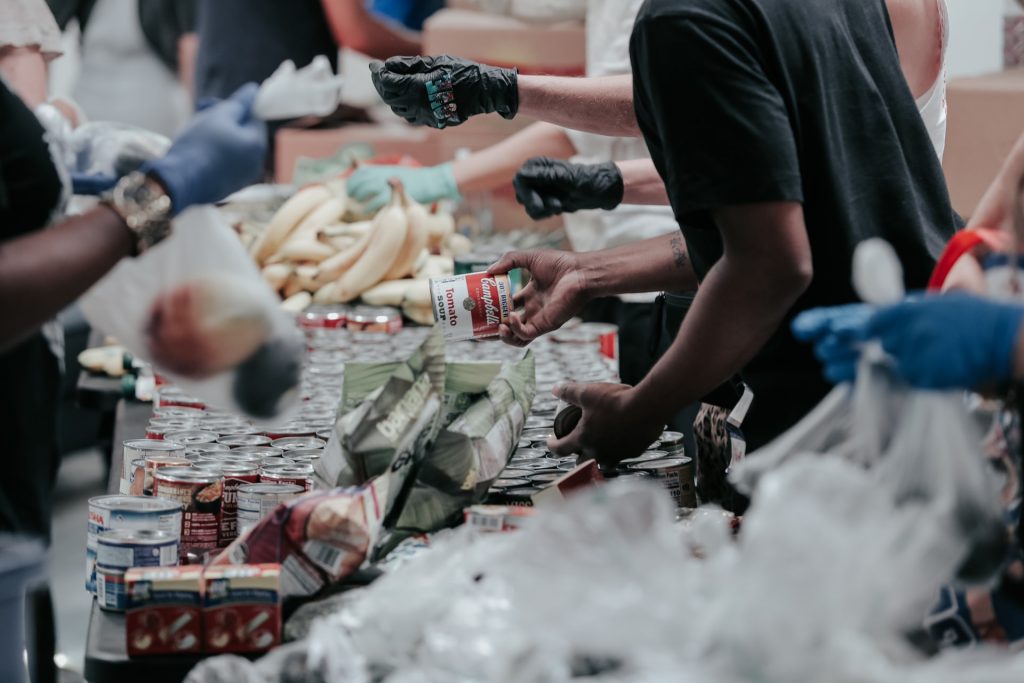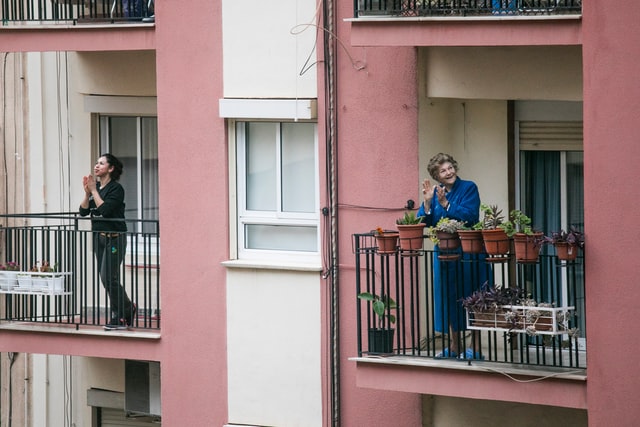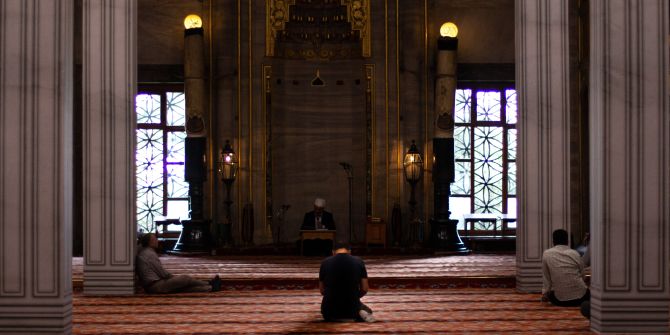Before the pandemic and throughout, faith communities have provided food and support to vulnerable populations, filling the gap of provision in local communities. In this post, Anishka Gheewala-Lohiya writes about her research as part of the LSE COVID and Care Research Group into the Hindu concept of seva, or service, and how local mandirs have responded to the pandemic through service to their local community.

Food has been and is a central issue in discussions on the COVID-19 pandemic. At the start of the March 2020 lockdown, there was widespread panic about food supplies, anxieties on deliveries and getting basic necessities. Though this affected everyone in the UK, the gap between those with the resources to get food and those without deepened as the lockdown went on. While mutual aid organisations sprung up in all communities and volunteers joined together to help the most vulnerable get their basic needs, there were concerns about dietary requirements for specific religious communities.
My research was with the Jalaram Mandirs around London and Leicester who have long been involved in food distribution to those in need. Their established, sophisticated structure and management for meal distribution was disrupted on a large scale by the pandemic on three main levels. Firstly, lockdown meant that their kitchens were closed for meal prep. Secondly, their supply chain, from larger supermarkets and other benefactors, faced obstacles such as transport. Finally, their religious activity through seva (service) was greatly reduced, particularly through their main pool of volunteers, the older generations, having to stay at home. Seva provides the religious framework for all their work in food distribution. As an ethical framework, seva varies from person to person. For instance, some volunteers see what they do as outwardly religious while others wish to live by the Hindu saint, Jalaram’s, principles. Through service to others, this ‘ethical’ and ‘moral’ framework comes to find space through food distribution. This answers a material need in providing food to those who need it and a spiritual one through consumption of blessed food.
The movement
From a regional Gujarati Lohana movement to a pan-Hindu international one, Jalaram Bapa is a well-known figure. The saint lived from 1799-1881. The central tenet of food distribution in the Jalaram movement stems from the hagiography of the saint and his many food-related miracles. After his death, the kitchen where he lived in Virpur was visited by an unknown sadhu, or renouncer, who said the stores would never run out, which is said is the case today. Followers worship through selfless service or seva to others by preparing and distributing food in the form of blessed or sacred prasad. Prasad is most often translated as blessed leftovers. It is food that has been offered to the gods and then redistributed as blessings to devotees. This is not a new concept in Hindu movements and many communities receive prasad from the gods as a sign of divinity, a communicative and interactive form of relationship; “[i]n anthropological terms, food becomes a powerful, polyvocal interlocutor between matter and spirit, and body and self”. Mandir kitchens around the world still provide vegetarian meals for anyone regardless of social status or religion; and, stemming from Jalaram’s seva framework, they are to help those in need.
COVID
At the start of the pandemic, the Jalaram mandirs took to the virtual world, with live online broadcasting, rituals and prarthana (prayers) over Zoom led by priests. While many religious practices continue through online rituals and broadcasts, the seva side of the movement by regular volunteers was brought to a standstill. Through the pandemic, all temples were closed, so mandir kitchens were also affected. This led to a lack of regular, daily donations coming through. Though they had connections for food supply with larger supermarkets, and collaborations with food banks, and fewer people to feed due to their movement restrictions, they were not getting the frequent £1 donations at the mandir. While families did give one-off large donations, this was concerning for the mandir as they had long-term debts to cover and priests to take care of.
One older man (around 70) I spoke to has been a Trustee of a mandir for 12 years. For the last 7-8 years, he has organised homeless drives in association with the mandir, feeding around 600 people in central London each week. This is the impact of one mandir, and there are at least six in the UK.
“If they don’t want hot Indian meals, we can even do sandwiches and provide fruit” he continued, with gusto. “Though many people they like the hot food”.
After the lockdown began, the mandir tried to maintain working connections with larger supermarkets and food banks. However, with the mandir kitchen closed they had nowhere to store or cook the food. Moreso, some food was going off too quickly and could not get to people. Though they worked with a local restaurant to cook, as the mandir’s kitchen remained closed, the surplus of food remained. To address the issue, members of the mandir kept multiple fridges in their own homes to store the food. Seva does more than address food poverty – it gives purpose to the community, but also helps elderly people who live alone and those who cannot cook.
Many of the volunteers are in the 60s, most often female, and considered to be vulnerable to the virus. The need to distribute food supply was essential, however, the mandir needed younger people to drive vans. While volunteers were “dying to get back to it,” an interviewee said, even with the risks associated with their age, the restrictions on movement left many people frustrated. It was a matter of missing their daily community as well as doing seva for those who needed help. This was, and is, a time of crisis for many people. The mandir has the potential to alleviate food poverty through distribution, loneliness through community seva and religious and spiritual nourishment through the online ritual resources and practicalities of seva. However, the innovative way the mandir thought through these issues was seen as apart from government help. For the future, he suggested that food distribution should be allowed and be made easier. For example, through alleviation of ULEZ (Ultra Low Emission Zone costs) in central London. The mandir have older vans given by donations, not able to afford brand new vans.
Seva as a framework
While Jalaram is not doctrinally divine, his ethic of seva frames the way many devotees understand their religious work, by dedicating their charitable work to the divine. The mandir is a space for the community as well as seva as a religious act. The framework of seva is integral to understanding Jalaram’s mandirs mission. Through seva, the concept of ‘interfaith’ is embodied in the sense that the Jalaram mandir provides to anyone, irrespective of faith. It is not a subtle conversion mechanism or intended to spread ‘Hindu’ values, but rather a commitment to the wider society. The pandemic has allowed for the mandir to find innovative ways to use technology to offer religious discourse, prarthana (prayers) and other rituals online, yet the community continues to grapple with how to do seva at a time where food distribution seemed, and, in many cases still is, an essential need.
Note: This piece gives the views of the author, and not the position of the LSE Religion and Global Society blog, nor of the London School of Economics.





